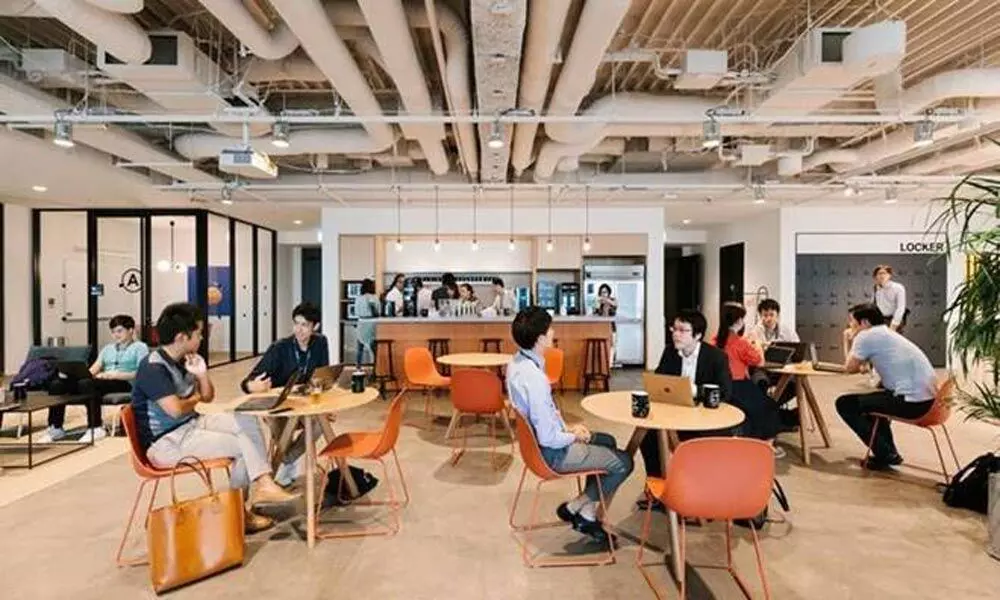Tier-2 cities predominate flex office space in India
Cities such as Ahmedabad, Bhubaneshwar, and Coimbatore have emerged as the leading location choice in terms of flex space, followed by Jaipur, Chandigarh, and Lucknowm, says JLL-Awfis report
image for illustrative purpose

• Work from home back in demand due to Covid
• Low cost of living in tier-2 cities
• Focus on talent across regions
• Hybrid work model
New Delhi: Flexible working space has created a popular demand in tier-2 cities now, with hybrid work style being the need of the hour. According to a recent finding, tier-2 cities such as Ahmedabad, Bhubaneshwar, and Coimbatore have emerged as the leading location choice in terms of flex space, followed closely by Jaipur, Chandigarh, and Lucknow.
According to JLL-Awfis report titled 'flex your workplace', 48 per cent of respondents or occupiers who already have a presence in tier-2 cities want to further expand their flex working space. An overwhelming figure of 78 per cent of these occupiers are expected to expand within the next one year.
Bizz Buzz, on 20 September, 2021, had reported that multinational corporation operating in India would be willing to open office spaces in tier-2 and tier-3 cities. Domestic tech firms, targeting the interiors and cities/towns beyond the metros for business expansion opportunities, are looking to create regional offices as the Covid-19 cases continue to be reported in India and across the globe.
Radha Dhir, CEO and Country Head, India, JLL, said: "Given the new on-ground realities, it's now a crucial part of occupier real estate strategies. While 75 per cent of the flex portfolio, on average, is still in tier-I cities, the hybrid model is fostering the growth of flex operators in tier-II cities as well. We expect demand for flex spaces to continue to rise in the metros, and the tier-II cities will witness tremendous growth. Driven by reverse migration, focus on talent across regions and cost of living, the tier-II market is perfectly poised to witness a significant upswing in hybrid workplaces."
The report says that even among those who did not have a tier-2 city office footprint, 34 per cent of companies had employees working from tier-2 locations in the current scenario. While 47 per cent of the respondents had a presence in tier-2 cities, one-third of those were medium to large companies with employee strength of 3,000 or more.
Among top-7 cities, Bengaluru is the clear leader accounting for 34 per cent of the total flex stock, the survey has found. With Covid-19 pandemic being the chief reason, 2020 saw only 4.4 million sq ft added to the flex stock, down by 58 per cent in terms of activity levels. Adding to it the second wave in 2021 also impacted the market and it will close out on similar number as of previous year.
"For a variety of motivations including the need for shorter leases, an ever more mobile workforce and greater caution by companies in making capital expenditures, tenants are increasingly requiring flexibility in lease terms, especially as they await greater clarity in business conditions and workplace strategies. With the pandemic exacerbating uncertainty, tenant sentiment now indicates that flexible space adoption is set to accelerate substantially as demand shifts from fixed long-term commitments to more agile and hybrid options," said Amit Ramani, Founder and CEO, Awfis.
The share of flex space in total Grade A office space leasing in the top seven cities in 2019 hit a high of 16 per cent, a year of historic highs for the Indian office markets. It dipped, however, to just nine per cent in 2020, before reaching 13 per cent again in the first three quarters of 2021.

